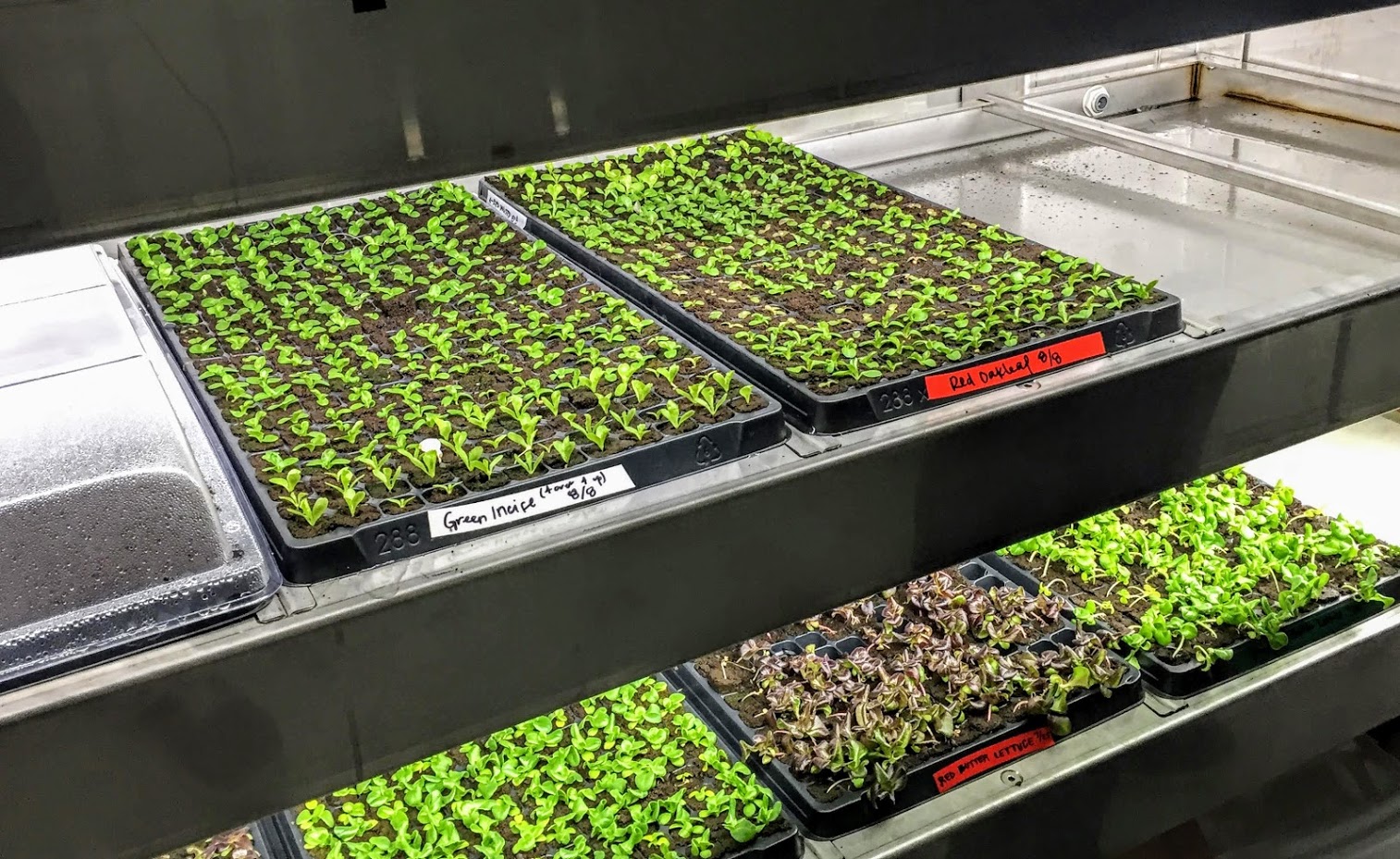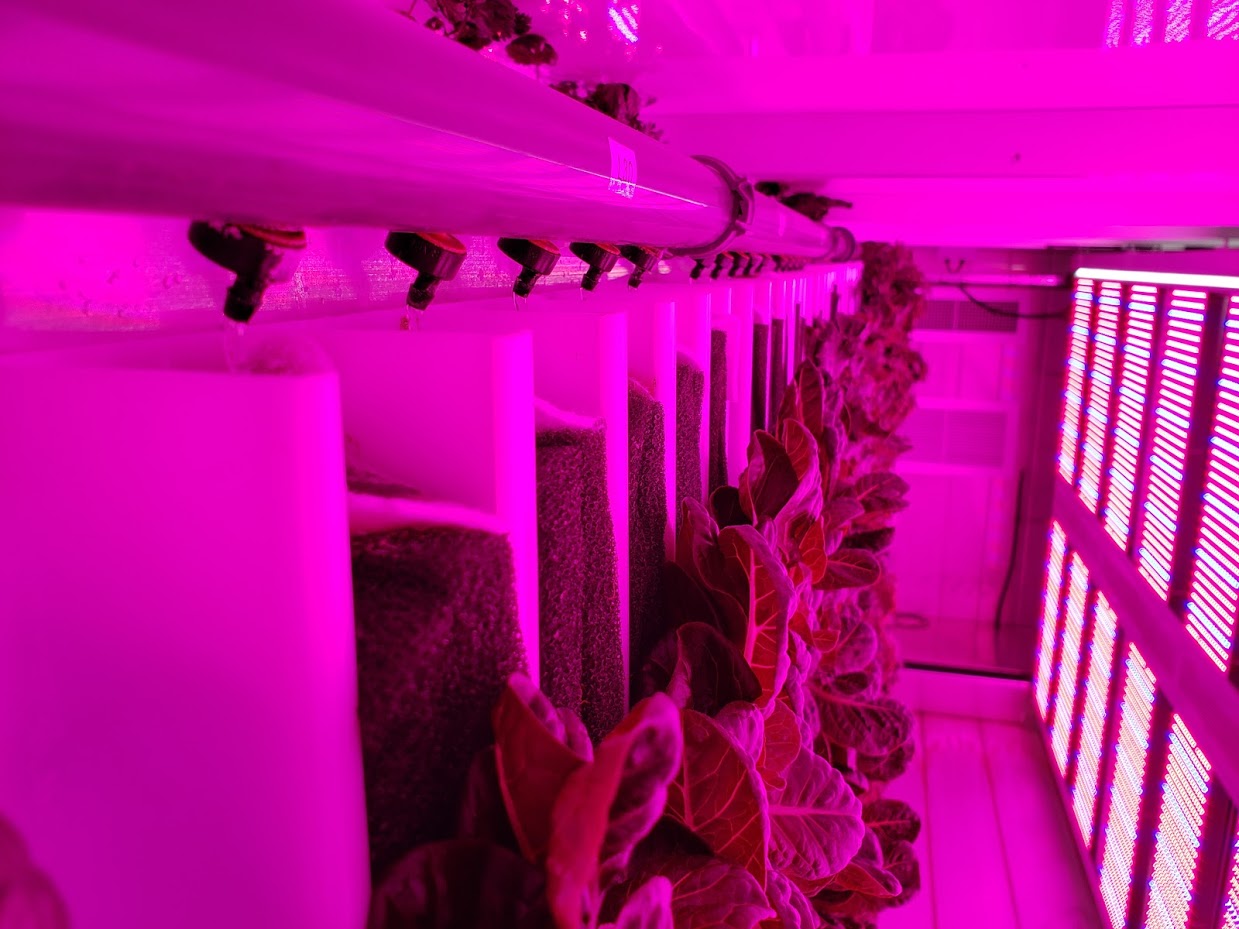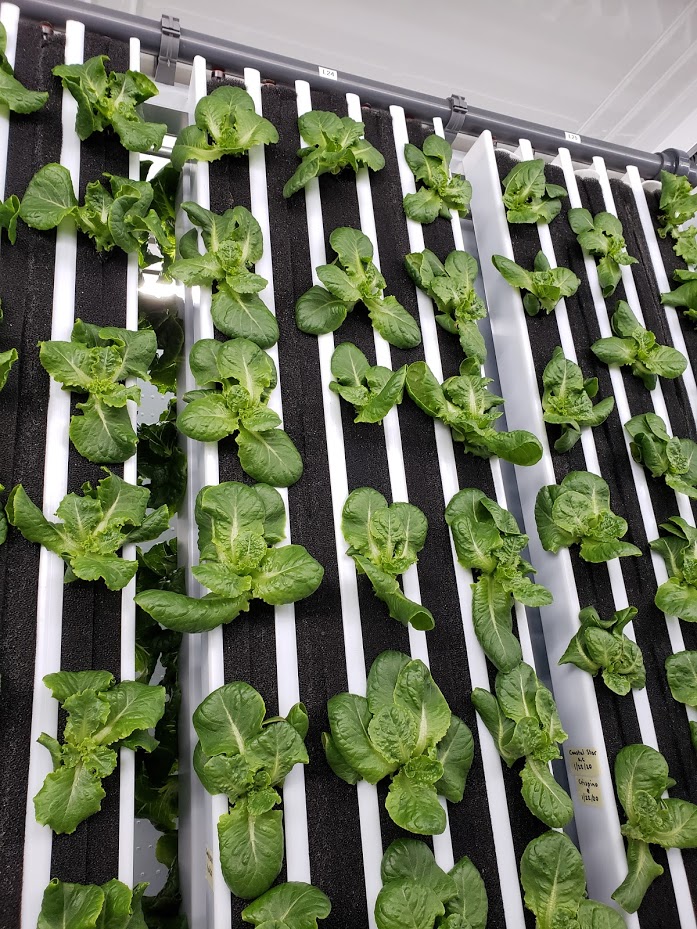We’re strong proponents of sustainability in all its forms—reducing consumption, having a smaller carbon footprint, and full manufacturing transparency among them—but the one that’s most central to our day-to-day operations is simply helping businesses use less water.
That’s why a new hydroponic farm outside Chicago caught our attention.
A typical commercial restroom—in an office, a restaurant, or an airport, for example—goes through ten gallons of water every few minutes. But at Wiseacre Farm, in suburban Glenview, ten gallons of water can nourish a full day’s growth for hundreds of heads of lettuce. And that’s on a dry day.
“We can actually have net negative usage,” says founder Aviad Sheinfeld, “depending on what we’re growing and the outside humidity. On a humid day water gets reclaimed by the air conditioning and fed back into irrigation. We can reclaim up to two gallons an hour under the right conditions.”
This astonishing water sustainability is one reason hydroponic farming has exploded in recent years.
Growth in Local Sourcing and Hydroponics
“It makes a ton of sense to grow food close to where it will be eaten,” says Sheinfeld. “That’s how it used to be. And so much of the food we eat can be grown this way.”
This is an idea with national and global implications. Nearly three-quarters of Americans in one 2018 survey said they actively shop for locally grown foods, with 92% seeking out local vegetables. And top restaurants cite locally sourced produce as one of the top trends among both chefs and consumers.
Hydroponics plays an increasing role in this trend, since it allows vegetables to be grown in controlled, indoor, water-based environments where local conditions may not be suitable for outdoor growth.
Sheinfeld explains, “I can grow year-round in Chicago, which is not a great traditional farming environment. I don’t need acres of land.” Indeed, his entire farm fits inside a single shipping container, housed in an ordinary warehouse.
This ability to grow produce virtually anywhere has driven worldwide growth in hydroponic farming. Hydroponic technology was nearly a $24 billion global market in 2018, with projected annual growth of 6.8% through 2024. $8.1 billion of that spending is in the United States, where the business is growing 12.1% annually.
Advanced Growing Technology in Cool Purple
How do you grow up to 175 pounds of lettuce per week in a shipping container?
Wiseacre sows seeds in small grow plugs made of a peat moss material. Once seedlings germinate, they’re transferred to water troughs that house up to 4,600 seedlings at once. Computerized pumps automatically introduce nutrient and pH solutions to maintain optimum levels.

When ready, plants are transferred to vertical cultivation panels holding as many as 100 plants apiece. They’re watered from a 110-gallon tank, with pressure-regulating emitters controlling the water flow at a continuous, 2 gal./hour drip. Recirculation gutters drain unused water back into the main tank, where pH and nutrients are rebalanced as the water is recycled.
“It’s hard to believe you can get much more water-efficient than this,” Sheinfeld says. “The water goes right to the root and is reclaimed from the air.
All the while, the plants are bathed in purple light from hundreds of blue and red LEDs.

Sheinfeld says, “If we were growing 50% full sized lettuce heads and 50% mini lettuce heads, we would expect to produce over 75 lbs. of full size and 100 lbs. of mini size lettuces per week.”
“As Fresh as They’ve Ever Eaten”
With several warehouse-sized hydroponic operations vying for the consumer market, Wiseacre Farm is targeting local restaurants catering to diners who value locally grown produce.
“There’s absolutely a demand,” Sheinfeld says. “Restaurants love touting locally grown food, and it’s more unusual in Chicago than in, say, California. You don’t have the risks of contamination you might have with mass farming, since the water doesn’t go through livestock farms. It’s a much more consistent product.”
Wiseacre grows seven varieties of lettuce and three varieties of basil, along with cilantro, arugula, and swiss chard. Sheinfeld believes this produce will impress whoever tastes it. “An average consumer would say probably this is as fresh as they’ve ever eaten. Chefs would say the arugula’s a little more peppery than average, and the lettuce crispier.”
The quality of the food was just one reason Sheinfeld founded Wiseacre Farm. “I was hooked by the idea of growing food as close as possible to where it’s consumed—hyperlocal, extra fresh, with no pollution,” he says.
“Water sustainability is getting to be more of an issue,” he adds. “In 20 years, this is how most Americans could get their vegetables.”
Is water sustainability a priority for your next commercial restroom? Sloan water-saving technology saves millions of gallons of water every year. Like to know more? Talk to Sloan!
Stay Up to Date
Sign up for the Sloan blog to receive information on the latest trends in commercial building, technology advancements and product updates. It's the leading source of industry news for architects, designers, engineers and contractors.
